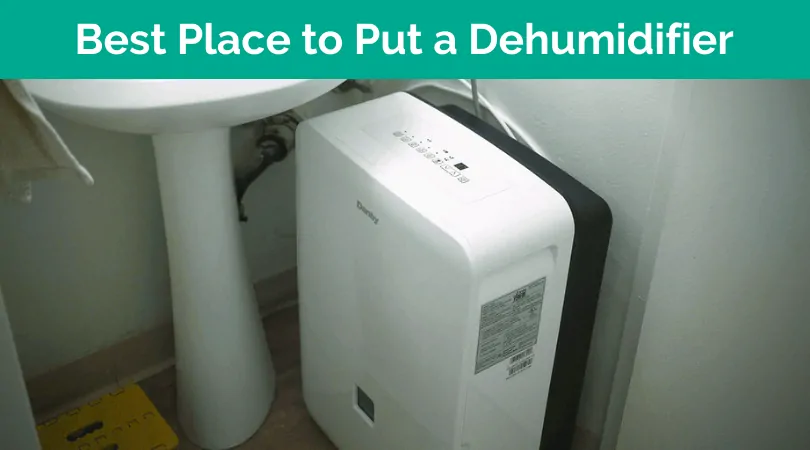A dehumidifier’s job is to remove excess moisture from the air. In turn, this makes for a more comfortable indoor environment.
When used efficiently, this device will not only improve the air quality of indoor spaces, but it will also protect the home’s structure and prevent mold damage.
However, placing a dehumidifier in the wrong location can reduce its functionality. Keep reading about where you should place a dehumidifier 🙂
[toc]
Where to Place a Dehumidifier in Your Home?
Ideal Places to Have a Dehumidifier
The Basement
The basement is one of the best places to have a dehumidifier. First of all, most of them are damp and wet from the surrounding earth. My favorite best overall dehumidifier for basement.
In addition, a low water table means that moisture levels in basements are high. All of this contributes to the high humidity levels in basements.
This moisture can damage a building structure and encourage mold growth. Having a dehumidifier unit will reduce moisture levels and protect your home.
The Bathroom
A bathroom is by nature moist and damp. If your bathroom lacks windows and exhaust fans, excessive moisture can cause mold to develop and the paint to bubble.
Placing your dehumidifier in the bathroom removes excess humidity and improves ventilation.
The Bedroom
If you plan to put a unit in a small room, place it as centrally as you can. When placing a dehumidifier in a large room, the unit should be near the source of moisture.
The Garage
The garage is where the moisture level is too high in the house where needs to install the unit.
The following are some factors to consider when placing a dehumidifier in your home for maximum effectiveness and safety.
Air Circulation
Dehumidifiers are designed to suck in air, remove moisture, and expel it. You must keep the unit in a location that blocks air circulation.
You should ensure it is placed at least six inches (about 16 centimeters) away from walls on all sides. That goes for any other objects that could block airflow to and from the unit.
However, some models are designed to be placed near walls without reducing the unit’s effectiveness.
Dirt and Dust
Although most dehumidifiers are designed to filter out dust and dirt particles, having a humidifier in a place with so many dirt particles can overwhelm the device.
The dirt particles can clog up the unit’s filter and reduce the device’s efficiency. Make sure the space around your dehumidifier is relatively clean. It doesn’t need to be spotless, but a dirty space will compromise the dehumidifier’s ability to do its job.
Electricity
Just because the unit runs on electricity does not mean you should place it near an electrical outlet. The unit should be far from the outlet it is plugged into and any other electric cords and cables.
That is because the water collected by the dehumidifier is either contained in an internal tank or drained with the help of a hose. If a spill or leak occurs while the dehumidifier is close to an electric outlet, the unit can become an electrical hazard.
Drainage
Depending on your unit’s model, the moisture extracted from the air can either be stored in an internal container or drained through a hose.
If an internal tank is used, you must ensure it is emptied whenever it is full. If a drain hose is used, you will want to minimize the length of the hose as much as possible.
That will reduce the possibility of any leaks. In addition, a short hose reduces the chance of a person tripping over it.
My name is Theresa Clark. I am an engineer and air quality specialist.
